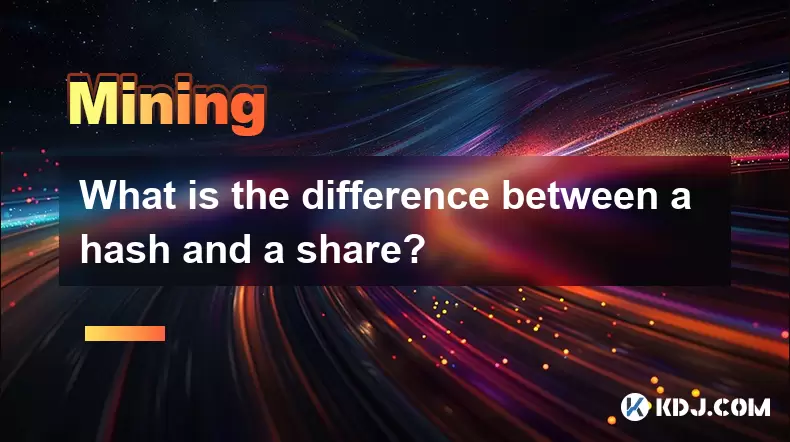-
 Bitcoin
Bitcoin $117,892.7399
-0.88% -
 Ethereum
Ethereum $3,436.0662
8.30% -
 XRP
XRP $3.2599
10.11% -
 Tether USDt
Tether USDt $1.0002
0.01% -
 BNB
BNB $717.3007
3.34% -
 Solana
Solana $176.4021
5.42% -
 USDC
USDC $0.9997
-0.02% -
 Dogecoin
Dogecoin $0.2159
6.54% -
 TRON
TRON $0.3116
3.64% -
 Cardano
Cardano $0.8084
7.68% -
 Hyperliquid
Hyperliquid $46.2989
-3.74% -
 Stellar
Stellar $0.4732
1.54% -
 Sui
Sui $4.0022
-0.66% -
 Chainlink
Chainlink $17.1611
3.71% -
 Hedera
Hedera $0.2461
3.30% -
 Bitcoin Cash
Bitcoin Cash $496.6743
-0.74% -
 Avalanche
Avalanche $22.9305
3.52% -
 Shiba Inu
Shiba Inu $0.0...01446
3.31% -
 UNUS SED LEO
UNUS SED LEO $8.8124
-0.07% -
 Toncoin
Toncoin $3.2407
4.13% -
 Litecoin
Litecoin $100.2127
2.57% -
 Polkadot
Polkadot $4.2312
2.34% -
 Monero
Monero $340.1485
1.97% -
 Pepe
Pepe $0.0...01370
3.49% -
 Uniswap
Uniswap $8.9383
-2.38% -
 Bitget Token
Bitget Token $4.7134
0.59% -
 Dai
Dai $0.9998
-0.04% -
 Ethena USDe
Ethena USDe $1.0003
-0.03% -
 Aave
Aave $323.6890
-1.90% -
 Bittensor
Bittensor $429.1624
-3.39%
What is the difference between a hash and a share?
Hashes secure blockchain data by creating unique, fixed-length outputs from inputs, ensuring immutability and integrity across decentralized networks.
Jul 17, 2025 at 09:28 am

Understanding the Basics of Hashes
In the world of cryptocurrency, hash plays a foundational role in ensuring data integrity and security. A hash is essentially a fixed-length alphanumeric string generated by a hashing algorithm from an input of any size. This output is unique to the input data, meaning even a small change in the input results in a completely different hash.
For example, using the SHA-256 algorithm (commonly used in Bitcoin), the phrase "hello" produces one hash, while "helo" (with a typo) generates another. This property makes hashes invaluable for verifying data consistency across decentralized networks.
Hashes are also crucial in blockchain technology because they help link blocks together securely.
Each block contains the hash of the previous block, creating an immutable chain. If someone tries to alter a block's content, its hash changes, breaking the chain and alerting the network.The Role of Shares in Mining
While hashes deal with cryptographic integrity, shares are more relevant in the context of mining pools. In Proof-of-Work (PoW) systems like Bitcoin or Ethereum (before The Merge), miners compete to solve complex mathematical puzzles. However, individual miners may not have enough computational power to find a valid solution on their own.
To increase their chances and stabilize income, miners often join mining pools, where they work collectively. Instead of submitting only full solutions (valid blocks), pool members submit shares, which are proof-of-work computations that almost meet the difficulty target required to mine a block.
Each share represents a partial contribution toward solving a block. When a pool successfully mines a block, rewards are distributed proportionally based on the number of shares each miner submitted during that round.
Shares act as internal accounting units within mining pools to fairly allocate rewards among participants.
How Hashes Are Used in Blockchain Transactions
Every transaction in a blockchain undergoes a hashing process before being included in a block. These transactions are hashed multiple times and organized into a Merkle Tree, a structure that allows efficient verification of large datasets.
The final hash at the top of this tree, known as the Merkle Root, is stored in the block header. This ensures that any tampering with a single transaction would alter the Merkle Root, making it detectable.
Additionally, each block header contains several components:
- Version number
- Timestamp
- Difficulty target
- Nonce
- Hash of the previous block
- Merkle Root
These elements are all hashed together to produce the block hash, which must meet the current difficulty requirement to be accepted by the network.
Without hashing, blockchain would lose its immutability and transparency features.
Differences Between Hashes and Shares: Scope and Purpose
Although both hashes and shares are integral to cryptocurrency systems, they serve entirely different functions:
- Hashes are cryptographic outputs used for securing data and verifying authenticity.
- Shares are intermediate proofs used in mining pools to track contributions and distribute rewards.
Hashes are part of the consensus mechanism at the protocol level, while shares operate at the application layer within mining ecosystems.
Another distinction lies in their validation process. A hash must meet specific criteria set by the blockchain’s difficulty level to be considered valid. On the other hand, shares do not need to meet this threshold — they just need to be close enough to demonstrate effort without fully solving the puzzle.
Hashes validate the blockchain itself, whereas shares validate participation in mining efforts.
Technical Workflow: From Hashing to Sharing
Let’s walk through how hashing and sharing interact in a typical mining scenario:
- A miner receives a new block template from the pool software.
- They begin hashing potential nonce values combined with the block header.
- When a hash meets the pool’s difficulty requirement (but not necessarily the network’s), it is submitted as a share.
- If the hash meets the network difficulty, it is a valid block, and the pool submits it to the blockchain.
- Rewards are then distributed based on the number of qualifying shares submitted by each miner.
This workflow illustrates how shares are derived from hashing operations but serve a different purpose within the broader mining infrastructure.
It’s important to note that mining pools adjust the difficulty of what constitutes a valid share dynamically to balance between accuracy and resource usage.
Shares ensure fair compensation without requiring every miner to achieve full block solutions.
Frequently Asked Questions
Can a share ever become a valid block?
Yes, technically, a share can meet the full network difficulty and qualify as a valid block. In such cases, the mining pool broadcasts it to the blockchain and rewards the miner accordingly.
Are shares unique to Bitcoin?
No, shares are used in any Proof-of-Work cryptocurrency that supports mining pools, including Ethereum (pre-Merge), Litecoin, and Dogecoin.
Do shares affect blockchain security?
Shares themselves don’t impact blockchain security directly. Their primary function is internal reward tracking within mining pools. The actual security relies on cryptographic hashing and consensus rules.
Is it possible to fake shares in a mining pool?
Most modern mining protocols include anti-cheating mechanisms like Stratum V2 to prevent fake or invalid shares from being submitted. Pool operators verify each share before crediting it.
Disclaimer:info@kdj.com
The information provided is not trading advice. kdj.com does not assume any responsibility for any investments made based on the information provided in this article. Cryptocurrencies are highly volatile and it is highly recommended that you invest with caution after thorough research!
If you believe that the content used on this website infringes your copyright, please contact us immediately (info@kdj.com) and we will delete it promptly.
- Trump, Meme Coins, and Tokens: A Wild Ride in Crypto
- 2025-07-17 18:50:12
- Ripple's EU Expansion: RLUSD Takes Center Stage, XRP's Role Defined
- 2025-07-17 18:30:12
- XRP Whale Alert: $73M Moved to Coinbase – Correction Incoming?
- 2025-07-17 19:10:14
- Sui (SUI), Mutuum Finance (MUTM), and DeFi Adoption: A Tale of Two Trajectories
- 2025-07-17 19:10:14
- Crypto Bills, ETH Surge, and Buybacks: Decoding the Latest Moves
- 2025-07-17 19:50:11
- Shiba Inu's ATH Ambitions: Can It Outpace the Competitors?
- 2025-07-17 18:30:12
Related knowledge

How are crypto mining profits taxed?
Jul 14,2025 at 12:28am
Understanding Cryptocurrency Mining and TaxationCryptocurrency mining involves validating transactions on a blockchain network and earning rewards in ...

How to keep a mining rig cool
Jul 12,2025 at 01:42pm
Understanding the Importance of Cooling in Mining RigsCryptocurrency mining is an intensive process that places heavy demand on hardware components, p...

How to mine crypto on a gaming PC
Jul 16,2025 at 12:00pm
What is Crypto Mining on a Gaming PC?Crypto mining involves using your computer's processing power to validate transactions on a blockchain network. A...

How to set up a crypto miner
Jul 16,2025 at 09:14am
Understanding Ethereum Gas Fees: What Are They and How Do They Work?Ethereum gas fees are a fundamental aspect of the network, representing the cost r...

Can you mine crypto on a laptop?
Jul 16,2025 at 02:21am
Is It Feasible to Mine Cryptocurrency on a Laptop?Mining cryptocurrency on a laptop is technically possible, but feasibility depends heavily on the ha...

Is crypto mining worth it?
Jul 16,2025 at 01:21am
Understanding the Basics of Crypto MiningCrypto mining refers to the process of validating transactions on a blockchain network by solving complex mat...

How are crypto mining profits taxed?
Jul 14,2025 at 12:28am
Understanding Cryptocurrency Mining and TaxationCryptocurrency mining involves validating transactions on a blockchain network and earning rewards in ...

How to keep a mining rig cool
Jul 12,2025 at 01:42pm
Understanding the Importance of Cooling in Mining RigsCryptocurrency mining is an intensive process that places heavy demand on hardware components, p...

How to mine crypto on a gaming PC
Jul 16,2025 at 12:00pm
What is Crypto Mining on a Gaming PC?Crypto mining involves using your computer's processing power to validate transactions on a blockchain network. A...

How to set up a crypto miner
Jul 16,2025 at 09:14am
Understanding Ethereum Gas Fees: What Are They and How Do They Work?Ethereum gas fees are a fundamental aspect of the network, representing the cost r...

Can you mine crypto on a laptop?
Jul 16,2025 at 02:21am
Is It Feasible to Mine Cryptocurrency on a Laptop?Mining cryptocurrency on a laptop is technically possible, but feasibility depends heavily on the ha...

Is crypto mining worth it?
Jul 16,2025 at 01:21am
Understanding the Basics of Crypto MiningCrypto mining refers to the process of validating transactions on a blockchain network by solving complex mat...
See all articles

























































































